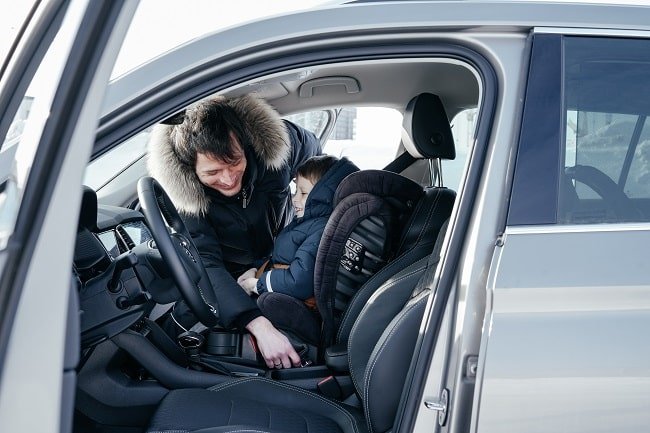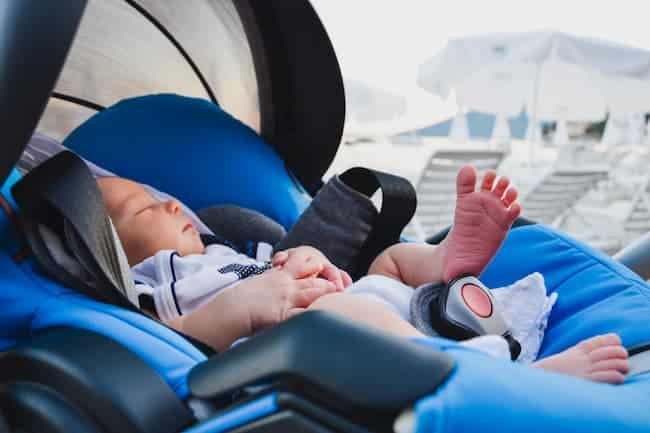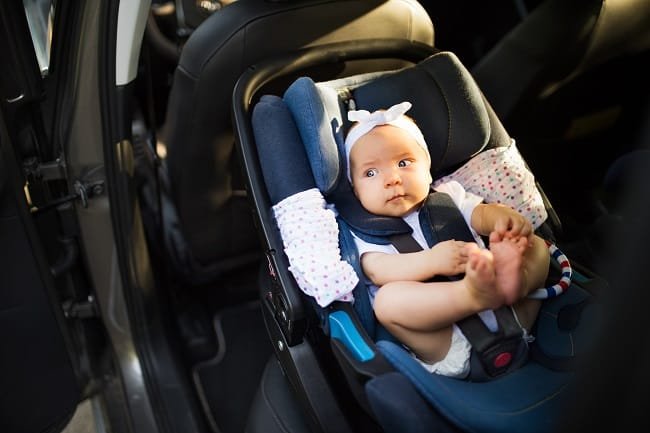The safety and well-being of our children is always our first responsibility as parents and caregivers. One area that needs our attention is the correct usage of booster seats in cars, which are essential for keeping our children safe when traveling by automobile. Minnesota, like many other states, has specific guidelines in place to ensure the correct usage of booster seats. Understanding these rules is crucial for every parent, guardian, or anyone responsible for transporting children. By adhering to the established regulations, we can provide an added layer of protection that significantly reduces the risk of injury in the event of a collision.
In this comprehensive article, we will explore the booster seat laws in Minnesota, their purpose, and the age, weight, and height requirements for children, especially for booster seats. We will also discuss the different types of it available and provide guidance on selecting the right one for your child’s needs.
Whether you’re a new parent navigating the world of car seat safety or a seasoned caregiver seeking a refresher, this blog will equip you with the knowledge and understanding necessary to ensure the safety of your precious passengers. So, let’s buckle up and embark on this informative journey through Minnesota’s booster seat rules.
Why do Booster Seats Matter?
Now, one might think that what is a booster seat? Well, for starters, booster seats are a type of seat for children aged between 8-12 years old since they are at that stage where they are almost able to reach for the seatbelt but just not there completely yet. The reason why a booster seat is used to strap these children is because if they use a normal seatbelt, then the seatbelt won’t hold them properly due to them being very young and small and if a seatbelt cannot properly strap a child in properly, then he/she is at a high risk for injury. This is why it is used so that the child is placed properly and the seat belt can strap him/her in the proper position.
Children below the age of 12 years should not be allowed to use a seat belt, as their body structure is still developing and growing into an adult body. The seat belt will strap above the pelvic area, which would be the stomach. An accident, will affect the internals and cause what is known as the “seat belt syndrome”. Apart from getting the child’s internal organs damaged, sometimes the spinal cord can get a good hit from it and can get damaged which could lead the child to become paralyzed.
It will make sure that your child is uplifted so that he/she can be properly strapped in without needing to worry about potential dangers. They aren’t that expensive so you need to spend a fortune to buy them. If you are thinking why should one bother to waste money and buy a booster seat since I drive very carefully so there is no way that I will crash into another car?
It’s better to be safe than sorry because accidents can occur anytime without any time, and is it not our job to protect our kids and make sure that they are safe at all times. Instead of paying thousands to pay medical bills when your child is injured during an accident, it is better to get a booster seat for a couple of hundred dollars.
Overview of Booster Seat Regulations in Minnesota
Ensuring the safety of our children while traveling in vehicles is of paramount importance. In Minnesota, specific booster seat regulations are in place to safeguard young passengers. Understanding these regulations is crucial for parents, caregivers, and anyone responsible for transporting children.
The main purpose of it is to provide adequate protection and support for children who have outgrown traditional car seats but are not yet ready to use adult seat belts alone. Minnesota’s laws outline the age, weight, and height requirements for transitioning from car seats to booster seats.
According to the regulations, children must remain in a booster seat until they reach either 4 feet 9 inches in height or the age of 8, whichever comes first. Additionally, it is essential to select the appropriate type of it based on the child’s weight and age.
By familiarizing ourselves with these regulations and adhering to them, we can significantly enhance the safety of our young passengers during car journeys. So, let’s dive into Minnesota’s booster seat regulations and equip ourselves with the knowledge necessary to protect our children on the road.
| Key Factors | Minnesota’s Booster seat Requirement |
| Minimum Age | 8 years old |
| Maximum age | 12 years old |
| Weight | 30-35 kilograms |
| Height | 55 inches |
How much can a booster seat weigh in Minnesota?
Children minimum age of 8 must be secured in a federally approved child restraint system, which includes booster seats unless they are 55 inches tall or taller. The specific weight requirements may vary depending on the manufacturer’s guidelines for the booster seat basically it can contain 30 to 35 kilograms.
Types of booster seats allowed in Minnesota
High-back booster seats:
They are a kind of booster seat that comes with a lot of protection in the back and will make sure that your child’s back is protected on the backside. In case of an accident, when the child hurls back onto his seat, he won’t damage his head, neck, or his spinal cord since the high back booster seat has extra protection, which was there to protect his back completely from all kinds of injuries. Apart from the protection, it will provide the most comfortable so that the child does not feel discomfort at all during the whole ride.

Why use a high back booster?
There are several advantages of using high-back booster seats for children which are :
- Side Impact Protection: One of the primary benefits of high-back booster seats is the added side impact protection they provide. The high backrest acts as a shield and provides support to the child’s head and neck, reducing the risk of injury in a side-impact collision.
- Proper Seat Belt Positioning: High-back booster seats often come with adjustable headrests and shoulder belt guides. These features help ensure that the seat belt fits correctly across the child’s shoulder and chest, minimizing the risk of injury. The guides keep the seat belt in the optimal position and prevent it from riding up on the child’s neck or slipping off their shoulder.
- Improved Comfort and Support: High-back booster seats generally offer more comfort and support compared to backless boosters. The backrest provides cushioned support for the child’s back, allowing them to maintain proper seating posture throughout the journey. This can be particularly beneficial during long trips.
- Head Restraint Compatibility: Many vehicles have headrests that are designed to align with high-back booster seats. This alignment ensures that the child’s head is properly supported and protected.

Backless booster seats:
As the name suggests, these are booster seats without a back. There is no need to worry about its safety because some might think that, without a back, it will be unsafe. However, I am here to debunk that, as it is completely safe with this booster seat. It will give the child a boost so that he is placed higher and without the back, the child will be able to strap in much more properly with the seat belt and much more consistent when compared to the high-back booster seats.
Are backless booster seats safe?
According to statistics, backless booster seats are riskier to use for children than high-back booster seats. Moreover, more than 25 percent of fatal accident occurs due to side impact crashes which usually brings huge injuries. Let’s see why it is considered less safe compared to high-back booster seats in certain situations:
- Lack of Side Impact Protection: Backless booster seats provide minimal to no side impact protection for a child’s head and neck. In the event of a collision, the high back of a booster seat can help protect the child from side-impact forces and reduce the risk of head and neck injuries.
- Inadequate Seat Belt Positioning: Backless booster seats rely on the vehicle’s seat belt to properly restrain the child. However, without the guidance and support of a high back, the seat belt may not be positioned correctly on a child’s shoulder and lap. This can result in the seat belt resting on the child’s neck or abdomen, increasing the risk of injury during a crash.
- Limited Comfort and Support: Backless booster seats generally offer less comfort and support compared to high-back booster seats. The absence of a backrest can make it more challenging for a child to maintain proper seating posture throughout the journey. Discomfort or slouching could lead to a child subconsciously trying to adjust their position, which can compromise their safety in the event of a collision.
- Inadequate Head Restraint: Many vehicles have headrests that are designed to align with a high-back booster seat, providing additional support and protection to the child’s head and neck. However, with a backless booster seat, the vehicle’s headrest may be too high or misaligned, reducing the effectiveness of the head restraint.
Choosing and Using the Right Booster Seat
Before you buy your first booster seat, you need to consider the following several factors:
- Age of the child
- Weight of the child
- Height of the child
Once you have measured each of the given factors and made a list, then you can go ahead and get a booster seat that will be able to hold these factors in properly. However, the list does not end there. There is another thing that you need to take a look at and that is the safety features and the certifications and it’s the country of origin. You need to make sure that you give the safety features and the certifications a thorough read so that you aren’t being deceived in any way through faulty products. You also need to make sure that it comes with a warranty just in case.
Once you have bought the perfect booster seat for your child, now you have to set it up. You might think it’s a time-consuming process but it won’t take up much of your time if you follow the instructions manual and go through the guidelines slowly without rushing at all. You will need to test it in several places inside your car to see where it fits and looks best.
Once you have found the perfect place for your child’s booster seat, place it there and follow the guidelines on how to strap it down properly, and make sure that you strap the booster seat in tightly so that there are no loose ends. Once you have tightly strapped in your child’s booster seat, get your child now and place him on it to see how it looks and check if you are able to strap him/her in properly without any problem. Once you do a test run and don’t see any problem, well then, looks like your booster is ready to go.
Sometimes people will tend to rush up or not be careful and make mistakes. You need to make sure that you don’t make the following mistakes while setting up the it.
- Make sure that the seat belt aligns with the child’s position or else it will cause seat belt syndrome.
- Positioning the booster seat in the wrong spot might harm your child
- Strapping your child in the wrong way without reading the guidelines
Additional Tips for Booster Seat Safety:
One thing you need to make sure that you do from time to time is inspection. You need to inspect it for wear and tear. Since they are made up of cloth materials, they can get wear and tear over time of usage so you need to keep an eye on that, and if it does happen, then you need to take care of it as soon as possible before the situation escalates and gets worse.
Another thing that you need to keep an eye is on the straps that are used to keep it attached to the car seat. You need to inspect them from time to time to make sure that they are all tightly attached and that there are no loose ends present or twisted straps. If the straps start to get loose, then the booster seat won’t be able to hold the child in completely to the car seat and it will be problematic during hard brakes or an accident. Therefore, make sure to check them from time to time and fix them if need be.
If you want to take an official look at the government website related to all kinds of information about booster seats, then you can check out this website.
Conclusion:
Now that we have reached the end, we have managed to discuss everything related to the booster seats and the rules to use them in the state of Minnesota. It is an important item that needs to be used by every child when they are in a car for maximum protection. Without a booster seat, you could be putting your child’s life at a huge risk because; accidents can happen anytime and if your child is without it, then he/she might get injured very badly and could possibly even die. Our child’s safety is our main concern therefore it’s better to be safe than sorry.
Sometimes, you can get a booster seat and still use it improperly due to negligence by skipping through the guidelines and the instruction manual. You need to avoid that and do everything properly so that your child has a safe seat in the car without anyone needing to worry about anything. We all face different kinds of problems every day and we at Hacks for Cars try our best to help everyone with their problems and make sure that they leave our site with a smile on their face. I hope that this piece of the article was able to educate you on everything that you need to know about the rules for booster seats in Minnesota. If you have any other questions about other problems, then you can refer to our other articles, which might help you.


